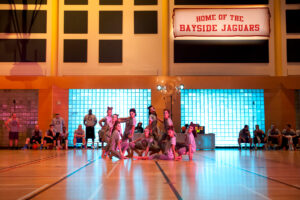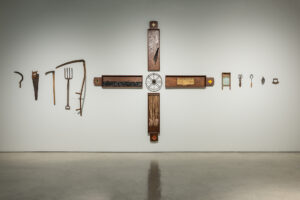The North plays a significant role in the national imagination. It evokes myths and legends in the minds of many Canadians: the spirit of adventure, the richness of Aboriginal cultures, the infinite reaches of nature and the unending clarity of summer days and long, cold winter nights. Burning Cold explores these concepts of the North and offers artists an opportunity to explore the realities of northern soceity and its relationship with southern Canada.
Many artists from the South have a romantic notion of the North and have looked to it for aesthetic inspiration, often making sojourns into its vast expanses. In contrast, artists who live in the North see it through the eyes and understanding of its inhabitants, their lives and culture shaped by it.
Burning Cold presents the work of visual artists from both above and below the 60th parallel who investigate the myths of the North and reinterpret them into a larger and more contemporary view of Canada. The show’s concept was developed as part of the Whitehorse 2007 Canada Games. Organized by a group of Canadian curators, it includes some of Canada’s best young artists from the North (Shuvinai Ashoona, Annie Pootoogook, John Sabourin, Doug Smarch Jr.) and South (BGL, Brian Jungen, Tania Kitchell, Craig Leblanc, Emily Vey Duke and Cooper Battersby). Diverse in media and perspective, these artists explore aesthetic and cultural issues that broaden our awareness and understanding of Canadian contemporary art.
Burning Cold questions assumptions about Canadian identity and history. For example, does geographic isolation affect or influence artists? How is the North, with its exotic inhabitants and harsh land, portrayed as a stereotype of Canada’s last frontier? Burning Cold reveals the new and original approaches of some of Canada’s most diverse artists. The exhibition also explores the differences between urban and rural and the diverse socio-cultural experiences of Aboriginal peoples living in both North and South.
Regardless of where in Canada one lives, Burning Cold offers new perspectives on the North and the way in which it is perceived in the rest of Canada. As the nation’s southern most city, Windsor is an ideal location to reflect upon these issues.





